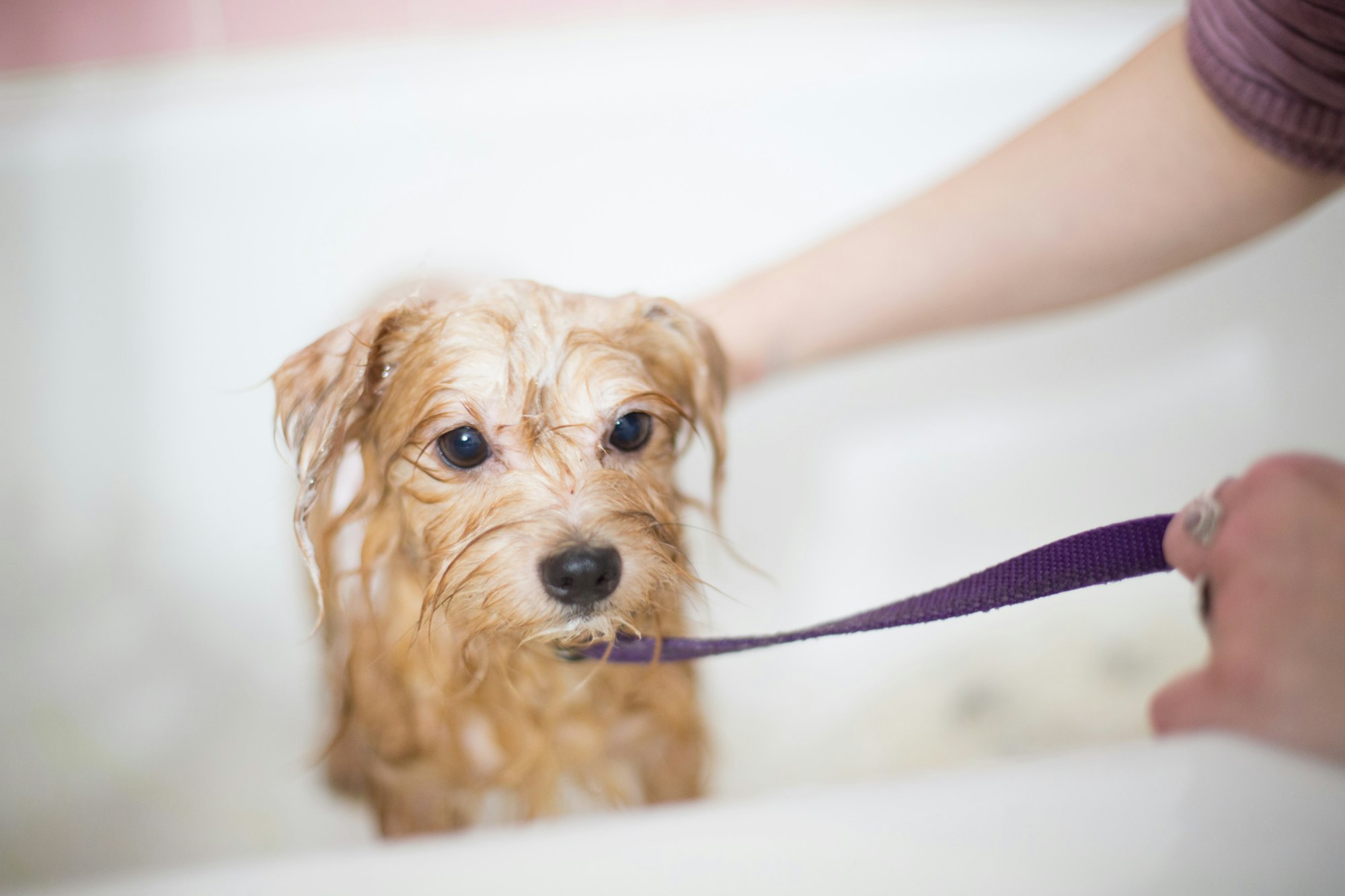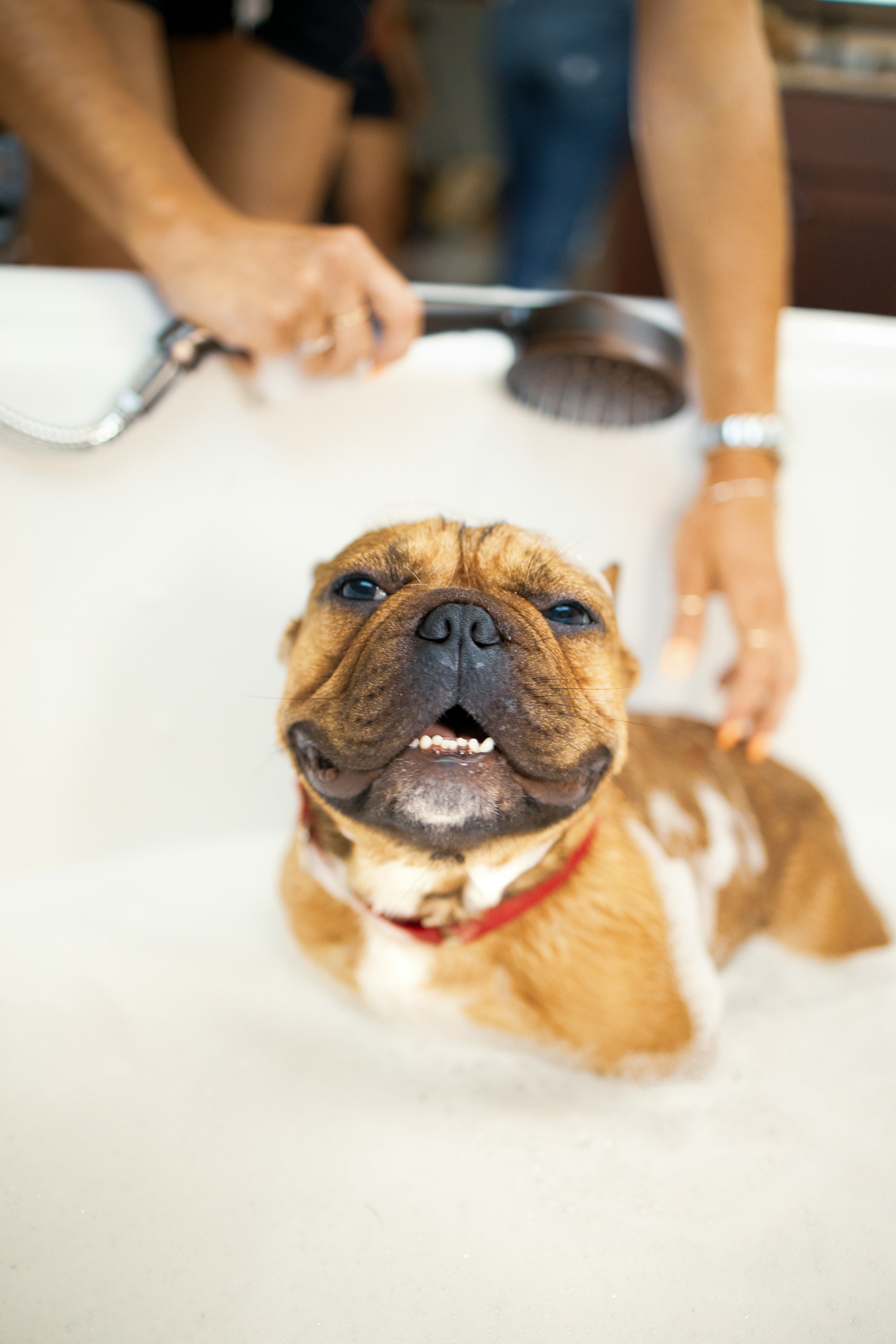Bathing your dog is an essential part of pet care. Not only does it help them look and smell fresh, but it also contributes to their overall health and well-being. However, determining how often to bathe your dog can be a bit tricky. In this article, we will explore the factors that influence the frequency of dog baths and provide you with practical guidelines to keep your furry friend clean and comfortable.

Why Bathing Your Dog Matters
Bathing your dog may seem like a simple task, but it holds significant importance for the health and well-being of your furry friend. Here are some compelling reasons why regular dog baths matter:
1. Maintaining Healthy Skin and Coat
One of the primary reasons for bathing your dog is to keep their skin and coat healthy. Regular baths help remove dirt, debris, excess oils, and dead skin cells from the coat, preventing skin issues such as itching and irritation. A clean coat also promotes better air circulation, which can reduce the risk of hot spots and fungal infections.
2. Reducing Allergens and Shedding
Bathing your dog helps reduce the amount of allergens like pollen, dander, and dust trapped in their fur. This is particularly beneficial for allergy sufferers in the household. Additionally, regular baths can help control shedding by removing loose hair, keeping your home cleaner and more comfortable.
3. Preventing Unpleasant Odors
Dogs have a unique scent, but a strong, persistent odor can be off-putting. Bathing your dog removes the dirt and bacteria that contribute to that "doggy smell," leaving them fresh and pleasant to be around.
4. Monitoring Your Dog's Health
Bathing provides an opportunity to inspect your dog's skin and coat closely. You can check for any unusual lumps, bumps, or skin issues that may require attention. Early detection of such problems can lead to timely veterinary care.
5. Bonding and Socialization
Bathing your dog is not just about cleanliness; it's also an essential aspect of bonding and socialization. Regular handling and positive experiences during baths can help your dog become more comfortable with grooming and handling in general.
Factors Influencing Bath Frequency
Determining how often you should bathe your dog isn't a one-size-fits-all equation. Several factors come into play when deciding the appropriate bath frequency for your canine companion:
1. Breed and Coat Type
Different dog breeds have varying coat types, and this influences their bathing needs. Long-haired breeds like Golden Retrievers may require more frequent baths to prevent matting, while short-haired breeds like Dachshunds can go longer between baths.
2. Activity Level
The activity level of your dog plays a significant role in bath frequency. Active dogs that love outdoor adventures may need more baths than those who lead a more sedentary lifestyle. Frequent romps in the mud or swims in ponds might necessitate a more regular bath schedule.
3. Skin and Allergies
Dogs with skin conditions or allergies may benefit from more frequent baths with medicated shampoos as prescribed by a veterinarian. Bathing can help soothe itching and remove allergens that exacerbate their condition.
4. Environment
The environment in which your dog lives also affects their bathing needs. Dogs in urban areas may need more baths due to exposure to pollutants, urban grime, and dirt. Conversely, dogs in rural settings may stay cleaner longer.
General Guidelines
While the factors mentioned above play a crucial role, here are some general guidelines for bath frequency:
- Short-haired breeds: Every 2-3 months.
- Medium-haired breeds: Every 4-6 weeks.
- Long-haired breeds: Every 6-8 weeks.
Remember that these are just starting points, and you should adjust the frequency based on your dog's specific needs and circumstances.
In conclusion, bathing your dog is not just about cosmetic cleanliness; it's a vital aspect of their overall health and well-being. By considering factors like breed, activity level, and skin condition, you can develop a personalized bath routine that ensures your furry companion stays clean, comfortable, and happy.
How to Bathe Your Dog
Bathing your dog might seem like a straightforward task, but there are essential steps to follow to ensure a safe and effective bath. Here's a step-by-step guide on how to bathe your furry companion:

1. Gather Your Supplies
Before you start, gather all the necessary supplies:
- Dog shampoo for sensitive skin (choose one that suits your dog's specific needs, such as hypoallergenic or medicated if required).
- Towels.
- A non-slip mat for the bathing area.
- A brush or comb appropriate for your dog's coat type.
- A gentle ear-cleaning solution (if needed).
2. Brush Your Dog
Before getting your dog wet, brush their coat thoroughly to remove any tangles, mats, or loose hair. This step not only makes the bathing process smoother but also helps maintain a healthy coat.
3. Prepare the Bathing Area
Place your non-slip mat in the bathtub or designated bathing area to prevent your dog from slipping. Ensure the water temperature is comfortably warm, similar to what you would use for a baby.
4. Wet Your Dog
Using a handheld showerhead or a container, wet your dog's coat thoroughly. Start from the neck and work your way down, avoiding their ears and eyes. Be gentle to avoid startling or scaring your pet.
5. Apply Shampoo
Pour a small amount of dog shampoo onto your hand and gently lather it into your dog's coat. Begin at the neck and work your way to the tail, paying extra attention to areas that tend to get dirtier, like the paws and underbelly. Use a shampoo designed for dogs to avoid irritating their skin.
6. Rinse Thoroughly
Rinse your dog thoroughly to remove all traces of shampoo. Ensure there is no soap residue left on their skin, as it can irritate. Continue to avoid the ears and eyes while rinsing.
7. Dry Your Dog
After the bath, use a clean towel to blot your dog's coat and absorb excess water. If your dog tolerates it, you can use a blow dryer on the lowest heat setting to speed up the drying process. Keep the dryer at a safe distance to avoid burning your pet's skin.
Signs You're Bathing Your Dog Too Much
While regular baths are essential for your dog's hygiene, bathing them too frequently can have adverse effects. Here are signs that you might be overdoing it:
1. Dry and Irritated Skin
Frequent bathing can strip your dog's skin of natural oils, leading to dryness, itching, and discomfort. If you notice your dog scratching excessively or their skin appears red and irritated, you may be bathing them too often.
2. Loss of Natural Oils
Over time, excessive bathing can cause your dog's skin to compensate by producing more natural oils. This can result in a greasy or oily coat, which isn't healthy or pleasant for your furry friend.
3. Behavioral Changes
If your dog becomes anxious, fearful, or aggressive during baths, it might be a sign that they associate bath time with stress. This can happen if you're bathing them too frequently, making the experience unpleasant.
4. Frequent Odor
While dogs don't need to smell like roses, a strong, persistent odor between baths may indicate that it's time for a wash. However, if your dog still smells bad immediately after a bath, you might be overbathing them.
5. Coat Damage
Bathing too often can weaken your dog's coat, making it more prone to breakage and damage. This is particularly true for long-haired breeds, where over-bathing can lead to matting and tangles.
Signs You're Not Bathing Enough
While over-bathing can be detrimental to your dog's health, under-bathing can also have negative consequences. It's essential to recognize signs that you might not be bathing your dog often enough:
1. Persistent Odor
One of the most apparent signs that your dog needs a bath is a lingering, unpleasant odor. If your furry friend emits a strong smell even shortly after a previous bath, it's a clear indication that it's time for another one.
2. Matting and Tangles
Failure to bathe and groom your dog regularly can lead to matting and tangles, especially in long-haired breeds. These can be painful for your dog and result in skin issues if left unaddressed.
3. Greasy or Oily Coat
A greasy or oily coat can be a sign that your dog's skin is overproducing natural oils due to infrequent bathing. While you don't want to strip these oils entirely, too much can lead to an unpleasant, greasy appearance.
4. Skin Irritation and Allergies
Dogs with sensitive skin or allergies may require more frequent baths with specialized shampoos to soothe irritation and alleviate symptoms.
5. Increased Shedding
Regular baths can help remove loose hair and reduce shedding. If you notice a significant increase in seasonal shedding, it may be time to step up your dog's bathing routine.
6. Dirty or Matted Paws
If your dog's paws are consistently dirty or matted with debris, it's a sign that they need more frequent cleaning and bathing. Clean paws are essential for your dog's overall health and comfort.
Special Considerations

Bathing your dog isn't a one-size-fits-all practice. Some special considerations should be taken into account to ensure the best bathing experience for your furry friend:
1. Puppies and Seniors
Puppies and senior dogs often require gentler bathing routines. Puppies have delicate skin that can be easily irritated, so opt for a mild puppy shampoo. Senior dogs may have more sensitive skin and may benefit from less frequent baths using senior-specific products.
2. Allergies and Medical Conditions
If your dog has allergies or specific medical conditions affecting their skin, consult your veterinarian for guidance on the right bathing frequency and suitable shampoos. Medicated shampoos may be necessary to address specific issues.
3. Fear of Water
Some dogs have a natural fear of water, making bath time a challenge. Gradually introduce your dog to water and make the experience as positive as possible with treats and praise. Consider professional grooming if your dog's fear is severe.
4. Breed-Specific Needs
Different dog breeds have varying coat types and requirements. Long-haired breeds, for example, may need more frequent baths to prevent matting, while short-haired breeds can go longer between baths. Research your dog's breed to determine its specific bathing needs.
5. Environmental Factors
Where you live can impact your dog's bathing frequency. Dogs in urban environments may require more frequent baths due to exposure to pollutants and dirt, while rural dogs might stay cleaner longer.
Conclusion
Finding the right bathing schedule for your dog is crucial for their comfort and health. By considering factors like breed, activity level, and skin condition, you can develop a personalized routine that keeps your furry companion clean, happy, and odor-free.
FAQs
Here are some common questions and answers regarding bathing your dog to help you better understand this essential aspect of pet care:
1. How often should I bathe a short-haired dog?
For short-haired breeds, a general guideline is to bathe them every 2-3 months. However, this can vary depending on your dog's specific needs and activities. Some short-haired dogs can go longer between baths if they don't get excessively dirty.
2. Can I use human shampoo on my dog?
No, it is not recommended to use human shampoo on your dog. Human shampoos are formulated for human skin and can be too harsh for a dog's sensitive skin. Using a shampoo specifically designed for dogs is the safer and more suitable option.
3. What if my dog hates baths?
Many dogs are not fond of bath time. To make the experience more pleasant, gradually introduce your dog to water and associate baths with positive experiences. Use treats and praise to reward good behavior during and after the bath. If your dog's fear of water is severe, consider professional grooming services.
4. Are there natural alternatives to commercial dog shampoos?
Yes, there are natural alternatives to dog shampoos. Some dog owners use oatmeal, coconut oil, or apple cider vinegar solutions. However, it's essential to consult your veterinarian before using any home remedies to ensure they are safe and suitable for your dog's specific needs.
5. How do I clean my dog's ears safely?
Cleaning your dog's ears safely is essential to prevent injury or infection. Use a gentle, dog-specific ear-cleaning solution and a soft cloth or cotton ball. Only clean the visible part of the ear and avoid inserting anything into the ear canal, as this can cause damage or discomfort. If you have concerns about your dog's ear health, consult your veterinarian for guidance.
Remember that every dog is unique, and their bathing needs can vary. It's important to adapt your bathing routine to your dog's breed, activity level, and any specific health concerns they may have. Regular baths, when done correctly and with care, contribute to your dog's overall health and happiness.

